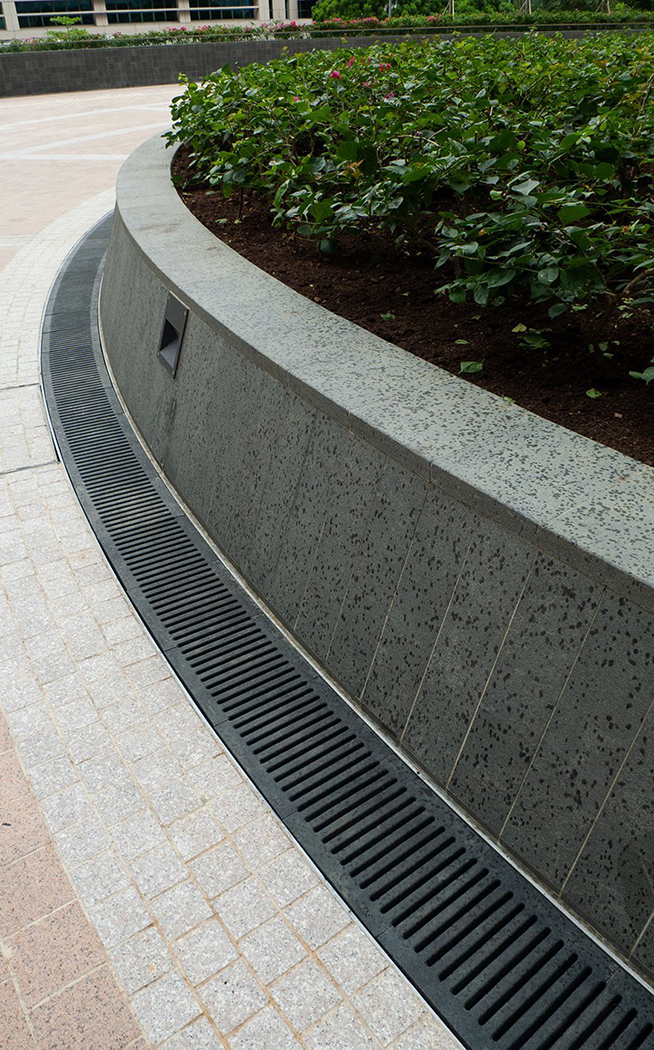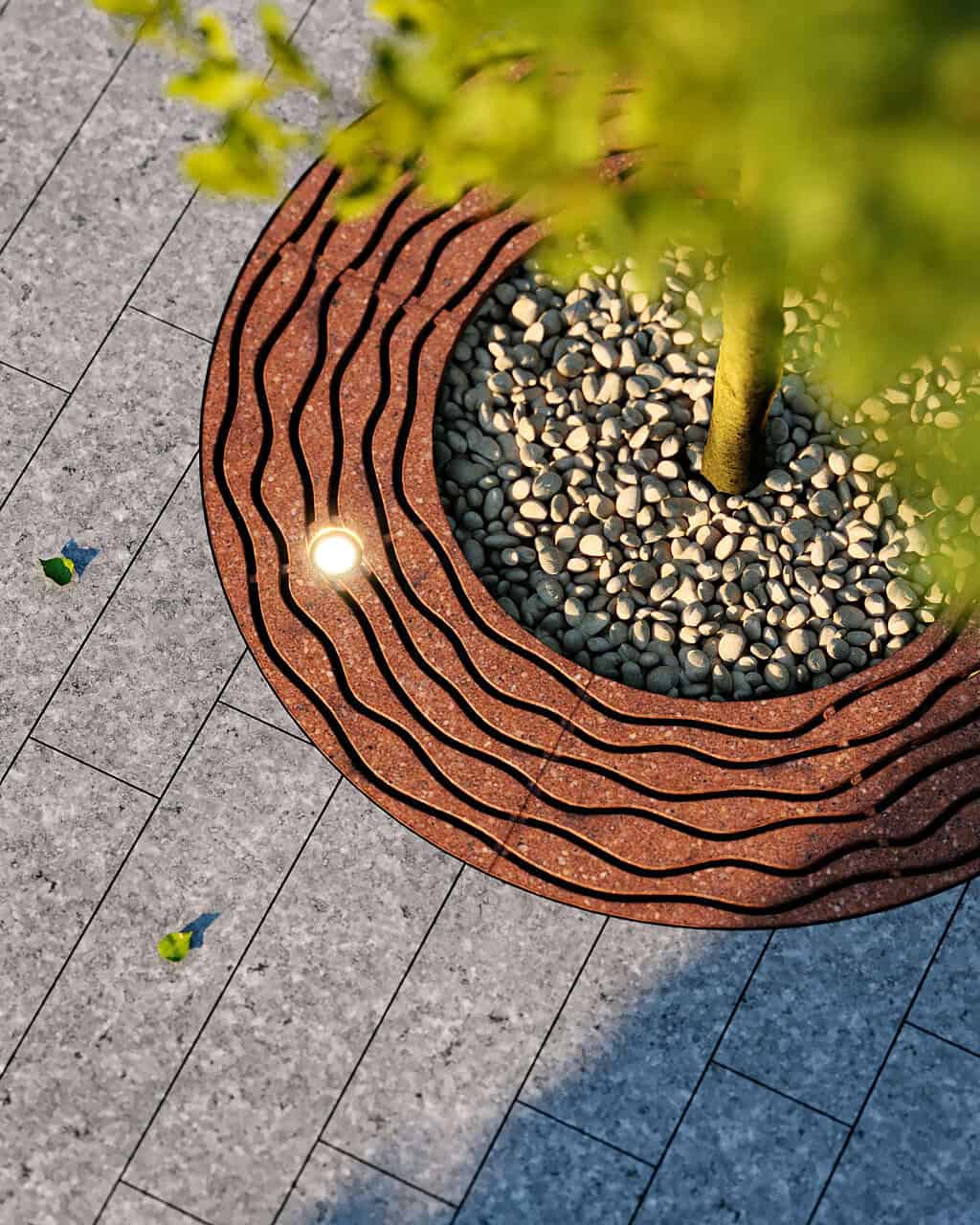In 2022-2023 10.5 billion passenger kilometres were travelled on heavy rail networks. People in Sydney use heavy rail more than any other city with 379 million passengers in 2018-19 (before COVID impacts). Stations are overwhelmed with passengers getting on and off, waiting or changing trains. Reliable, effective train station platform drainage is important to ensure safety of passengers and no interruptions from flooding to the network.
Railway stations - Diverse Specification Profile for Stormwater Management
Regardless of the size of a station – from small stations to large, multi-platform stations in major cites – a station project usually consists of 5 sections: station concourse, building/s, platform/s, bus stop areas and the railway tracks.
Station Concourse
The concourse is the main public areas, acting as the central hub for passengers to move between the separate facilities of the station. Adequate drainage for this area is critical for station accessibility. Drainage systems can serve as design elements and blend into the surrounding environment if necessary. Tree grates should also be considered for any trees in this area.
Station Buildings
Specifications for drainage around station buildings is usually limited to the façade and entrances. Effective drainage will prevent the pooling of water in pathways, helping keep the internal area of the station dry and clean.
Platforms
For platform drainage, systems must meet strict requirements for safety & function. Considerations include passenger safety, flow rates and sizing. Choose systems featuring anti-slip grates, fast flow rates and a large size range for versatile options.
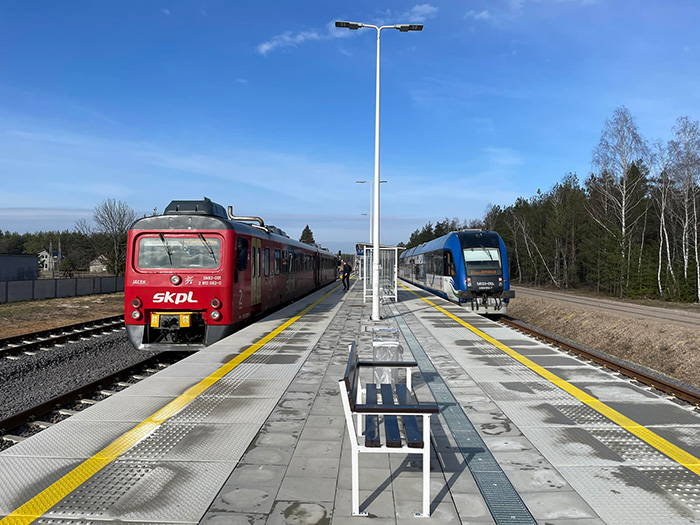
Safety
Platforms are usually constructed so the low point of the area is in the middle of the platform, directing any accumulation of water away from the train tracks; and objects such as wheelchairs do not slide close to the edge of the platform. Adequate selection of channel sizing and installation in the middle of the platform will efficiently drain water, preventing flooding and keeping the platform safe. Grates with features such as heel guard or anti-slip should be considered for additional safety.
Function
Some platforms may have restrictions on sizing of drainage systems due to platform construction or size of platform. Linear systems with a flat design are ideal for draining stormwater effectively. Additionally, materials should not be electrically conducive for the protection of everyone using the station.
Bus Station
Water management systems in the bus stop area is crucial, as this area often has heavy foot traffic, as well as vehicle traffic. Drainage systems should be able to withstand the load of the bus, whilst efficiently draining stormwater.
Drainage Solutions for Train Stations
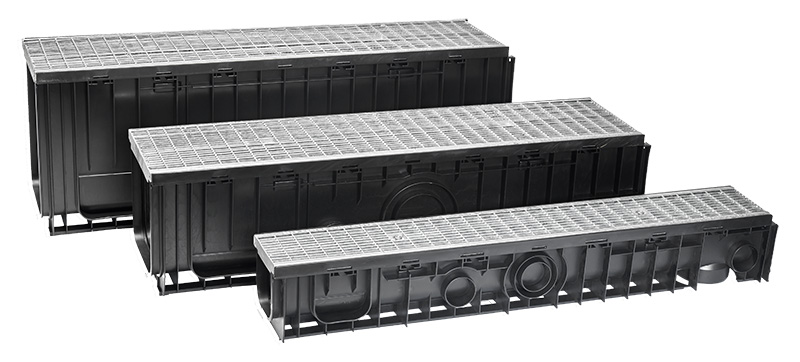
SABdrain 601 Series
601 features a polypropylene channel with Class B rated galvanised grates. Each galvanised grate comes with a 2 point security fixing, to keep it rattle free from vehicular movements and secure it from unauthorised access. Heel guard type grate, preventing heeled shoes & other objects from becoming caught in the grate.
Application Areas
- Platforms
- Concourse
Widths Available
- 100mm
- 150mm
- 200mm
- 300mm
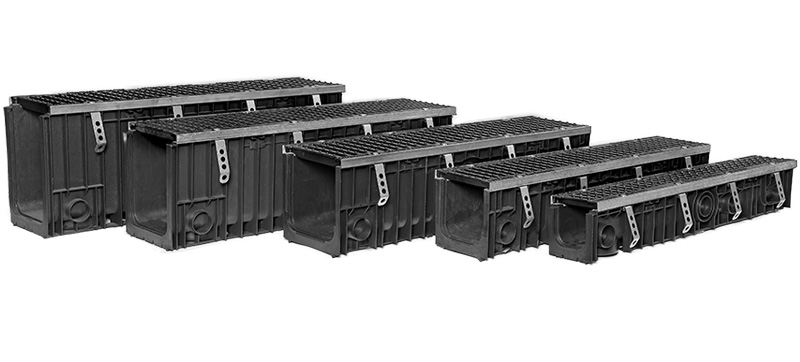
SABdrain 700 Series
Polypropylene channel with Class D-G rated cast iron grates. Each grate is equipped with 8 point security fixing system to keep it rattle free from vehicular movements and secure it from unauthorised access. Ideal for areas subject to heavier vehicles. Options for heel-guard grates.
Application Areas
- Platforms
- Concourse
- Bus Stations
Widths Available
- 100mm
- 150mm
- 200mm
- 300mm
- 500mm
